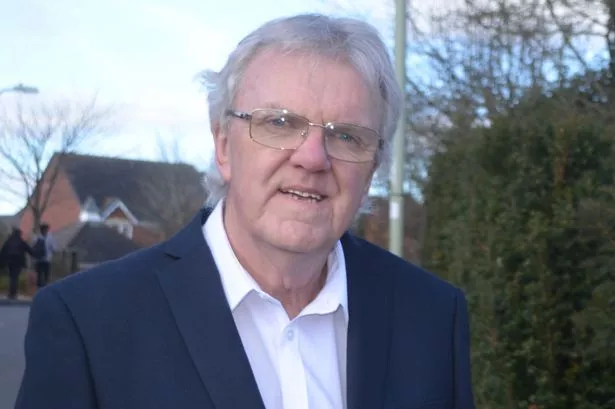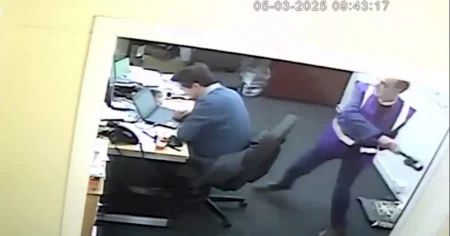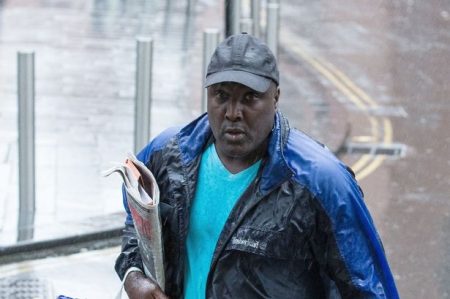The unexpected death of respected local politician Les Winwood at the residence of convicted crack cocaine dealer Keith Kennedy sent shockwaves through the community and sparked a flurry of questions surrounding the circumstances of his demise. The revelation that Winwood, a figure known for his staunch anti-drug stance and community involvement, was not only found deceased in the home of a known drug offender, but also subsequently “forensically linked” to a stash of drugs concealed within a pillowcase, further fueled public intrigue and raised concerns about potential inconsistencies in the politician’s public persona and private life. The initial shock and disbelief evolved into a complex narrative involving alleged drug use, questionable associations, and the potential for a scandal that could tarnish Winwood’s legacy and cast a shadow over his political career.
The discovery of Winwood’s body at Kennedy’s residence immediately triggered a police investigation. Authorities were tasked with determining the cause of death and understanding the nature of Winwood’s presence at the home of a convicted drug dealer. The subsequent revelation of a forensic link between Winwood and the drugs found in the pillowcase added a layer of complexity to the investigation. While the exact nature of this forensic link remained initially undisclosed, it suggested a potential connection between Winwood and the illicit substances, raising the possibility of personal drug use, a stark contrast to his public image. This discovery inevitably led to speculation about the extent of Winwood’s involvement with Kennedy and the potential for previously unknown aspects of his personal life.
The juxtaposition of Winwood’s public persona as a champion against drug abuse and his apparent connection to a drug stash found in a known dealer’s home created a stark contrast that fueled public speculation and media scrutiny. Winwood’s family, friends, and colleagues expressed shock and disbelief, struggling to reconcile the image of the respected politician with the emerging narrative of potential drug involvement. The community grappled with the implications of these revelations, questioning the authenticity of Winwood’s public pronouncements and the potential hypocrisy of his actions. The incident sparked a broader discussion about the complexities of human nature, the potential for hidden struggles, and the challenges of maintaining a pristine public image in the face of personal demons.
The ongoing investigation faced the challenge of piecing together the events leading up to Winwood’s death and clarifying the nature of his relationship with Kennedy. Investigators explored various possibilities, including accidental overdose, foul play, or a more complex scenario involving coercion or exploitation. The forensic evidence linking Winwood to the drugs became a crucial piece of the puzzle, raising questions about whether he was a casual user, a more regular consumer, or potentially involved in other drug-related activities. Determining the timeline of events and establishing the context surrounding Winwood’s presence at Kennedy’s house proved essential in unraveling the truth behind this perplexing case.
As the investigation progressed, the media played a significant role in shaping public perception of the unfolding events. News outlets reported on every development, often focusing on the sensational aspects of the story, fueling public fascination and speculation. The story became a subject of intense debate and discussion, with some expressing outrage and condemnation, while others offered more nuanced perspectives, emphasizing the need for compassion and understanding. The media coverage also brought to light the potential dangers of judging individuals solely on their public image and the importance of recognizing the complexities of human behavior.
The Winwood case serves as a cautionary tale, highlighting the potential disconnect between public image and private reality. It underscores the challenges of maintaining a pristine facade in the face of personal struggles and the potential consequences of undisclosed activities. While the investigation continued to unfold, the incident left a lasting impact on the community, reminding everyone of the human capacity for both good and bad, the complexities of addiction, and the importance of approaching such situations with empathy and a commitment to seeking the truth. The case remained a source of ongoing discussion and reflection, prompting conversations about the nature of leadership, the pressures of public life, and the potential for hidden struggles to unravel even the most carefully constructed public image.














